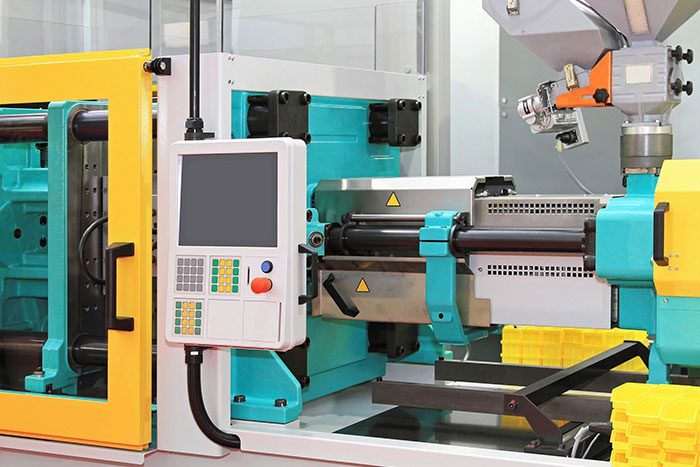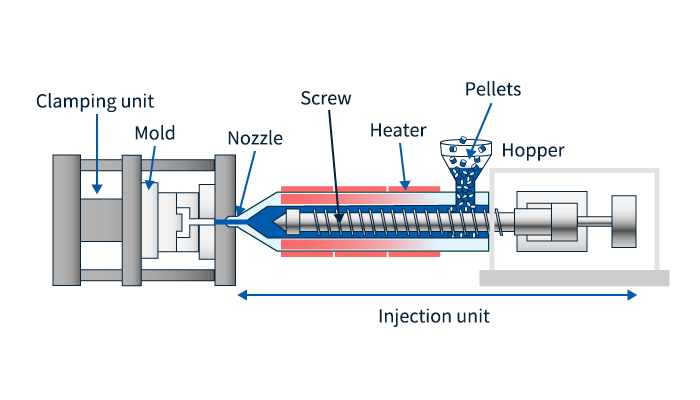The Effect of Plastic Injection Molding on Decreasing Production Costs and Waste
Wiki Article
Understanding the Basics of Plastic Injection Molding Processes
Plastic shot molding functions as a cornerstone of modern-day production, offering a systematic strategy to producing complicated parts with accuracy. This procedure not only encompasses the essential actions of melting and infusing products right into mold and mildews yet also involves a nuanced understanding of different influencing aspects, such as temperature level and stress. As industries increasingly demand efficiency and high quality, the intricacies of this technique end up being a lot more essential. Exploring these vital aspects can disclose exactly how even small modifications can cause considerable enhancements in manufacturing results, questioning regarding the capacity for development in this recognized process.What Is Plastic Shot Molding?
Plastic shot molding is a widely made use of manufacturing procedure that transforms thermosetting and thermoplastic products right into accurate and intricate shapes. This strategy is favored for its ability to produce high volumes of the same get rid of exceptional precision, making it an essential approach in various markets, consisting of automotive, consumer items, and clinical devices.
The process entails thawing the chosen plastic material and injecting it right into a mold and mildew under high pressure. The mold, created to the requirements of the desired part, enables the liquified plastic to form as it cools and solidifies. As soon as the product has solidified, the mold and mildew is opened up, and the ended up component is ejected.
Plastic injection molding provides a number of benefits, consisting of lowered waste, consistency in production, and the capability to integrate complex layouts that might be testing with various other manufacturing methods. Additionally, it supports a broad variety of materials, each supplying one-of-a-kind homes that can be customized for details applications. As sectors remain to introduce, plastic shot molding continues to be at the forefront, allowing the growth of sophisticated items that satisfy progressing customer demands.
The Injection Molding Process
The injection molding procedure is an innovative strategy that entails a number of crucial stages to create premium plastic elements. Plastic pellets are fed right into a warmed barrel where they are thawed into a thick fluid. This molten plastic is then injected under high stress right into a precision-engineered mold, which forms the product into the desired kind.When the mold is loaded, the plastic is permitted to cool and solidify, taking the shape of the mold and mildew tooth cavity. Cooling time is essential, as it affects the cycle time and the last residential properties of the molded part. After adequate cooling, the mold and mildew opens, and the ended up part is ejected using ejector pins.

Materials Utilized in Injection Molding
Various materials can be utilized in the injection molding process, each offering unique homes that satisfy particular applications. The most typically utilized materials include thermoplastics, thermosetting plastics, and elastomers.
Thermosetting plastics, like epoxy and phenolic materials, go through a chemical adjustment during the treating procedure, resulting in a stiff, stringent structure. These materials are excellent for applications needing high warmth resistance and structural stability, usually used in electric insulators and auto parts.
Elastomers, including silicone and rubber-based materials, offer adaptability and resilience. Their distinct buildings make them ideal for applications that require flexibility, such as seals and gaskets.
In addition, specialized products like bio-based plastics and compounds are see this website gaining traction for their environmental benefits and improved performance attributes, expanding the extent of shot molding applications in numerous sectors. Understanding the homes of these materials is vital for picking the ideal kind for details tasks.
Benefits of Shot Molding
Shot molding sticks out as an extremely effective manufacturing process that offers numerous benefits for generating intricate get rid of accuracy. One of the most significant advantages is the capacity to produce elaborate designs that would certainly be tough or difficult to attain with various other techniques (Plastic Injection Molding). The process permits for limited tolerances and detailed attributes, making certain high-grade partsFurthermore, injection molding is recognized for its fast production capacities, making it a suitable option for high-volume production. Once the mold and mildew is produced, parts can be generated swiftly, decreasing preparations and boosting overall performance. This effectiveness find more information not just reduces manufacturing expenses but likewise provides an one-upmanship in the marketplace.
The adaptability of products utilized in shot molding even more boosts its appeal. A vast variety of thermoplastics and thermosetting polymers can be used, allowing makers to select materials that ideal meet their details demands, including heat, versatility, and toughness resistance.
Moreover, the process lessens waste, as excess product can frequently be reused and recycled. This sustainability facet adds to a decreased environmental effect, making shot molding a liable production choice. In general, the benefits of shot molding make it a favored approach for several sectors.
Aspects Influencing Product Quality
While various elements can influence product high quality in shot molding, comprehending these components is critical for achieving optimal outcomes. Trick facets consist of product option, refining criteria, and mold and mildew style.Product choice plays an important function, as different polymers exhibit unique homes that impact flowability, stamina, and thermal stability. Inadequate product selection can lead to defects such as warping or insufficient dental filling.
Processing parameters, including cycle, temperature level, and pressure time, need to be thoroughly managed. Variations in these settings can cause incongruities partly dimensions and surface area coating. Exceedingly high temperature levels may trigger degradation of the polymer, while poor pressure can result in short shots.
Mold and mildew design is just as crucial, as it identifies the circulation of the molten plastic and the cooling process. Poorly made molds might result in irregular cooling prices, leading to dimensional errors and residual stress and anxieties.

Conclusion
Finally, plastic injection molding works as a critical manufacturing procedure that makes it possible for the reliable manufacturing of high-grade parts. Proficiency of the injection molding process, including the understanding of products and the impact of different elements on product quality, is essential for attaining optimal outcomes. The benefits of this technique, such as cost-effectiveness and style versatility, further underscore its significance throughout several markets, strengthening its status as a preferred selection for high-volume manufacturing.Plastic injection molding offers as a keystone of contemporary manufacturing, giving a methodical approach to generating complicated components with accuracy.Plastic injection molding offers numerous advantages, including minimized waste, consistency in manufacturing, and the ability to incorporate complex styles that might be challenging with other manufacturing techniques (Plastic Injection Molding). As industries proceed to innovate, plastic shot molding remains at the center, allowing the growth of sophisticated items that satisfy evolving consumer needs
The shot molding process is an innovative technique that involves a number of key stages to create premium plastic parts.In final thought, plastic shot molding serves as an important manufacturing process that makes helpful resources it possible for the effective manufacturing of high-quality elements.
Report this wiki page